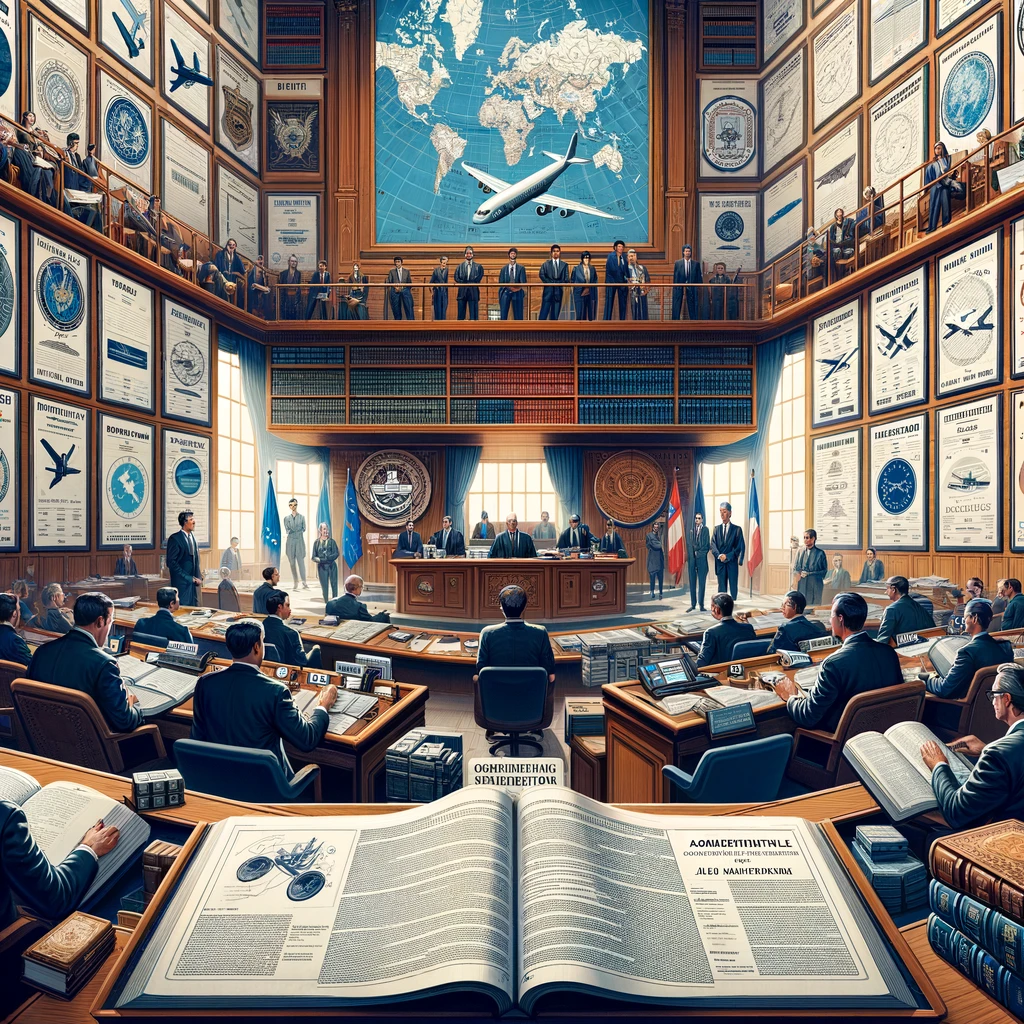Military aviation operates within a distinct legal framework, one that differs fundamentally from civil aviation due to its inherent purpose: the application of force. This difference brings forth a complex interplay between international humanitarian law (IHL), customary international law, and domestic military regulations. Understanding these overlapping regimes is critical for evaluating the legality of military air operations and ensuring accountability during armed conflict.

✈️ What Is International Humanitarian Law (IHL) – and Why Does It Matter?
Also known as the law of armed conflict, IHL provides the legal foundation for regulating aerial warfare. Central treaties like the Geneva Conventions and their Additional Protocols set out rules that limit the destructive potential of air power and protect civilians during armed conflict.

🛡️ Core Principles of IHL in Military Aviation:
1. Distinction
Military forces must clearly differentiate between:
- Military targets (enemy combatants, infrastructure, weapons)
- Civilians and civilian objects (homes, schools, hospitals)
👉 Attacks that deliberately target civilians are strictly prohibited under IHL.
2. Proportionality
Even when targeting military objectives, civilian harm must not be excessive relative to the expected military advantage.
> Example: You cannot lawfully destroy a village to eliminate a single enemy tank.
3. Precaution
Before conducting airstrikes or deploying weapons, militaries must:
- Carefully verify targets
- Choose tactics and weapons that minimize civilian harm
- Avoid or mitigate incidental damage wherever possible
These principles are not optional-they are legally binding on all parties to a conflict and crucial for lawful air operations.
🌐 Customary International Law: Unwritten, Yet Binding
Customary international law complements IHL through rules derived from consistent state practice and legal conviction (opinio juris). A prime example is the prohibition of indiscriminate attacks, especially relevant to aerial bombardments.
Other key concepts include:
- Military Necessity: Operations must serve a legitimate military purpose-but cannot justify unrestricted force.
- Humanity & Proportionality: Military necessity must be balanced against the duty to avoid excessive harm.
These unwritten norms carry the same weight as treaty law and significantly influence military aviation practices globally.
📜 Domestic Rules of Engagement (ROEs): Bridging Law and Practice
Each nation enforces Rules of Engagement (ROEs) that translate international legal obligations into specific operational guidance. ROEs instruct military personnel on:
- When and how to use force
- Target identification protocols
- Weapons deployment
- Self-defense procedures
Derived from both international and domestic law, ROEs are essential for compliance, accountability, and minimizing unlawful conduct during air operations.
🚁 Drones and Remote Warfare: A New Legal Frontier
Modern military aviation increasingly relies on unmanned aerial vehicles (UAVs) or drones, raising new legal and ethical challenges:
- Targeting decisions made remotely complicate accountability.
- Command responsibility must adapt to the lack of pilots onboard.
- The blurred lines between civilian and combatant roles heighten the risk of IHL violations.
> The legal framework for drones is still evolving, and each technological advance demands a reexamination of existing rules.

